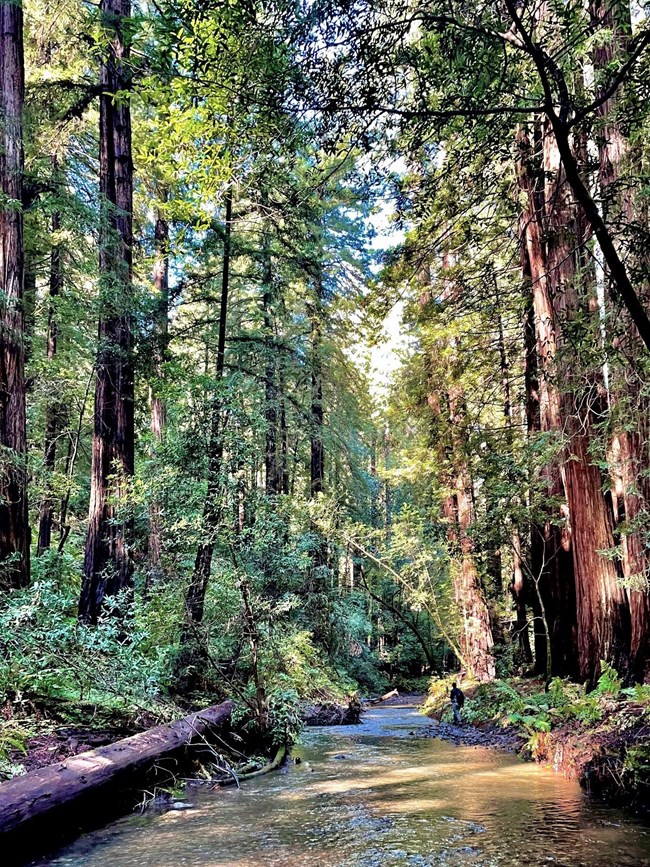Last updated: November 15, 2021
Article
Kings Ride the Atmospheric River into Unexpected Places

NPS / Tara Blake
By Tara Blake and Natale Urquhart
November 5, 2021 - On Sunday, October 24th, a highly anticipated atmospheric river swept through the Bay Area, dumping over a foot of rain on Mount Tamalpais. This record-breaking storm led to many road closures, flooded homes, downed trees, and likely an equally record-breaking number of people saying, “crazy weather we’re having, huh?”
Besides inciting disbelief in drought-accustomed Californians, this weather event has had very new and interesting impacts on anadromous salmonids (salmon, trout, and their relatives that split their lives between freshwater and ocean environments). In typical years, adult coho salmon make their journey from the ocean into coastal Marin County streams as early as mid-November once seasonal rains have generated high enough flows. Because of the substantial late October rains, our San Francisco Bay Area Network fisheries crew began conducting spawner surveys in anticipation of opportunistic Chinook salmon. Chinook, also known as king salmon, are the largest Pacific salmonid. On our second day surveying Redwood Creek, we observed an adult salmon. Our loud trudging through water quieted as we followed the salmon up a riffle into a pool, where it remained obscured from our view. This is the earliest a salmon has ever been recorded in Redwood Creek.
This lone salmon spearheaded the 2021-22 spawning season, as the following week we recorded an additional 10 adult salmonids among the rocks and woody debris in the very same creek. We identified seven of these as Chinook, which are a rarity to see spawning in this system. Chinook spawn about a month earlier than coho, and the distance they travel to their spawning sites depends on water depth and the connectivity of the water bodies. Flows in October are typically low and the sandbar separating Redwood Creek from the ocean does not usually give way to form a channel until later months. This early storm raised water levels by ~6.5 feet, opening pathways for the exceptional appearance of these king salmon in the upper reaches of Redwood Creek.
- Duration:
- 34.535 seconds
A pair of Chinook salmon on a redd (nest) in upper Redwood Creek. Chinook are a rarity to see spawning in this system. They spawn about a month earlier than coho when flows are typically too low to form a channel connecting Redwood Creek to the ocean.
Starting off this year’s salmon season with such an anomalous event begs many questions for what we will observe over the next several months. We are most curious to see if Chinook redds in Redwood Creek will produce young. If so, will adding a new salmonid species to a watershed such as Redwood Creek affect juvenile coho and steelhead populations? Regardless of the questions at hand, it is exciting to see a full and lively creek on the heels of such a severe drought. Hopefully the Chinook run is a precursor for a more robust coho return later this year.
For more information
- San Francisco Bay Area Network Salmonid Monitoring webpage
- Pacific Coast Science & Learning Center Coho & Steelhead webpage
- Contact Fisheries Biologist Michael Reichmuth
See more from the Bay Area Nature & Science Blog
